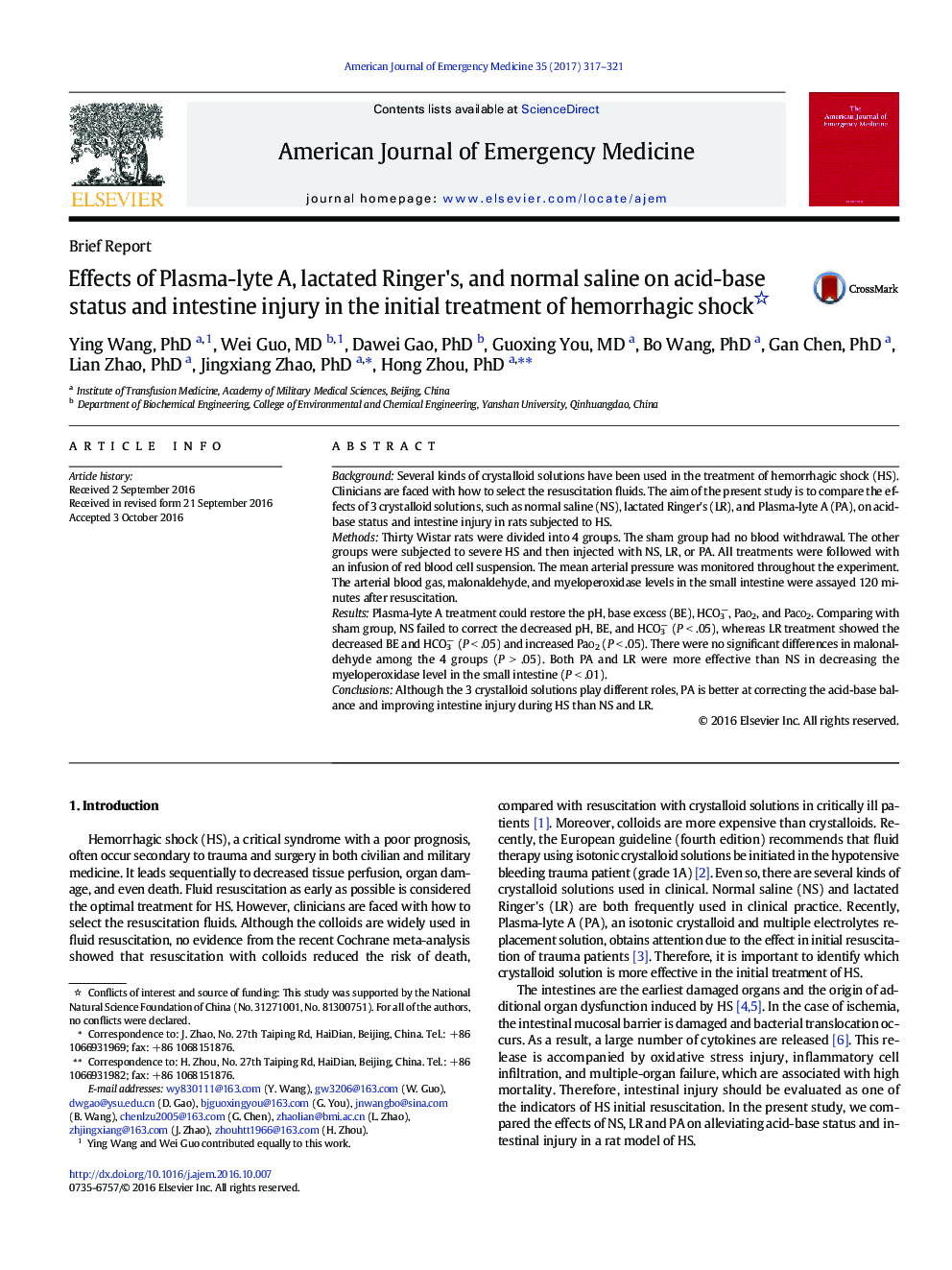| Article ID | Journal | Published Year | Pages | File Type |
|---|---|---|---|---|
| 5651031 | The American Journal of Emergency Medicine | 2017 | 5 Pages |
BackgroundSeveral kinds of crystalloid solutions have been used in the treatment of hemorrhagic shock (HS). Clinicians are faced with how to select the resuscitation fluids. The aim of the present study is to compare the effects of 3 crystalloid solutions, such as normal saline (NS), lactated Ringer's (LR), and Plasma-lyte A (PA), on acid-base status and intestine injury in rats subjected to HS.MethodsThirty Wistar rats were divided into 4 groups. The sham group had no blood withdrawal. The other groups were subjected to severe HS and then injected with NS, LR, or PA. All treatments were followed with an infusion of red blood cell suspension. The mean arterial pressure was monitored throughout the experiment. The arterial blood gas, malonaldehyde, and myeloperoxidase levels in the small intestine were assayed 120 minutes after resuscitation.ResultsPlasma-lyte A treatment could restore the pH, base excess (BE), HCO3â, Pao2, and Paco2. Comparing with sham group, NS failed to correct the decreased pH, BE, and HCO3â (P < .05), whereas LR treatment showed the decreased BE and HCO3â (P < .05) and increased Pao2 (P < .05). There were no significant differences in malonaldehyde among the 4 groups (P > .05). Both PA and LR were more effective than NS in decreasing the myeloperoxidase level in the small intestine (P < .01).ConclusionsAlthough the 3 crystalloid solutions play different roles, PA is better at correcting the acid-base balance and improving intestine injury during HS than NS and LR.
